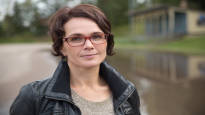Leading researcher, docent Kati Lehtonen from Jyväskylä University of Applied Sciences (Jamk) was one of the authors of the top sports evaluation. He does not know how the content of the evaluation has been handled in sports circles.
reported on Monday that, to the surprise of sports people, the report has not been discussed among top sports players.
– I’m not involved in the operational activities of sports, so I can’t say how extensively the evaluation has been handled during the year. As a researcher working group, we had one good-natured conversation with the Ministry of Education and Culture’s area of responsibility for exercise right after the summer holidays. In addition, the Sports Academy of the Capital Region Urhea organized one event to which researchers had been invited.
Lehtonen says that the researchers do not implement the change needs presented in the evaluation.
– We analyzed, gave input for ideas, an overview of the current state and history, and made suggestions for development. It is up to the financier, i.e. the Ministry of Education and Culture and the Olympic Committee’s top sports unit, how the evaluation is handled and what is implemented in concrete terms or whether it is implemented at all. One party finances and the other manages and thereby implements things. In addition, organizations operating in elite sports, such as sports federations, sports colleges and sports academies, play a central role.
– Evaluations also come and go. It could be that top sports players haven’t gotten, for example, the development proposals to touch their own everyday life, or they don’t think they can be implemented, continues Lehtonen.
He, too, has been following the public discussion about physical activity and sports, and states that he is confused by the silence that was noticeable in the discussion around elite sports, for example during government negotiations.
– Based on the public discussion, it seems that the Olympic Committee promotes everything but elite sports. Mika Lehtimäki the events after the breakup with recruitments were a turning point in Finnish elite sports. Since then, elite sports haven’t really been talked about publicly, silence has been chosen as the strategy.
What was HuMu’s goal?
The last year and the silence has made Kati Lehtonen think about whether the development of elite sports was even the original goal of the Huippu-eruhlu change group, HuMu (2010–2012) and the work group set by the ministry that preceded it. His own part in the evaluation was related to the change process of elite sports and changing the system in the 2010s.
– The idea that the change in elite sports could only be a side plot, even though it should have been the starting point, or the change process went awry, has become stronger. A bigger goal for some of the sports people seems to be to realize the 100-year wish of a single sports umbrella organization, which would apparently combine Finnish sports and sports structurally and functionally in Finland.
Related to this at Lehton is concern about how much public money has been put into the change process and the discussions, seminars and measures before and after it, which the perpetrators themselves couldn’t believe.
– Risto Nieminen was the most central architect of the change process in elite sports in the role of chairman of the Olympic Committee, and under his leadership, the national organizations began to be cleaned up into an even tighter bundle almost as soon as the elite sports unit started operating at the beginning of 2013. In other words, the well-founded original idea of an independent elite sports organization, which would be based on strong union cooperation and sports union memberships, was never implemented.
– In this time, when international sports are dividing at a rapid pace from the point of view of values, economy and level of requirements, the national sports and especially elite sports policy must be able to look ahead in a unified manner and elite sports must have a strong identity. Now I’m not quite convinced of what Finnish elite sports policy is, or if there is one at all, Lehtonen continues.
Most of all, he says, he is thoughtful about the development of the fundamentals on which the elite sports system should rely.
– At the beginning of the change process in elite sports, for example, the connections of the general quality of clubs, children’s and youth sports, and the civic activities of sports to elite sports success were identified. In addition, the Olympic Committee had to take responsibility for the coordination and development of Finnish coaching expertise and resourcing.
– On a broader system level, these basics still need a lot of discussion. Top sport is built on high-quality training, which is repeated daily. I hope that this matter is under control within the system as it was recorded ten years ago. And it’s not just that it’s held by the top 100-200 athletes. It must also be possessed in junior sports and on the athlete’s path from there until adulthood, Lehtonen states.
